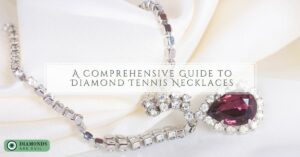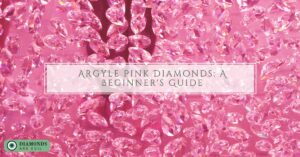Introduction
Just as mined diamonds, lab-created diamonds are usually certified and graded in like manner. Lad-created diamonds are referred to labs that specifically deal in diamond grading, usually called the “gem lab”. Gemological laboratories make use of the 4cs criteria in grading and certifying diamonds.
The 4cs criteria are; clarity, color, carat, and cut, which would be discussed much later. It should be noted gemological labs can be linked to various companies or laboratories in the world. A few of them are; Antwerp World Diamond Center, American Gem Society, International Gemological Institute, Gemological Science International, etc.
For every type of diamond, either mined or lab-created, the grading process is about the same assessment criteria. Diamonds are independently graded by several gemologists in their respective labs. However, the grades from each of the gemologists are summed up after several contrasts in order to arrive at a verdict on the final grade. This is because every diamond must have an unbiased grading system irrespective of what lab they get created from.
Howbeit, it’s possible for a diamond to have a dissimilar grade; this happens when it’s being sent back properly to the same lab for a second grading. Due to this differential, consumers and retailers come up with varying opinions as to debate on which of the lab is the “best”.
It is, however, necessary to understand that every opinion is highly relative and subjective. This makes retailers have a choice of the lab because they believe that their lab of choice will lead to grade diamonds fairly.
4C’s of diamond grading and certifying criteria
Cut Grade
The most misinterpreted grading criteria is the cut criteria but the most important grade to look out for on any diamond franchise report.
The way a diamond is cut has a great influence on its brilliance and sparkle, and obvious enough, it a feature that is most lookout for when anyone is interested in buying a stone of diamond. If the diamond is poorly cut, it appears gloomy and unexciting even though it has good color and clarity criteria.
It should be noted that the better the cut grade criteria you pick, the lesser you can go on carat, clarity, and color criteria. Howbeit the other C’s will not significantly upset the beauty of the stone but can significantly cause increased price variation.
Color Grade
Color is generally regarded next to cut because they are inter-linked in away. Whatever catches the attention of the eye must have displayed glamour to it. When a gemstone is grabbed, the first thing that usually gets noticed is the sparkle that reflects, and the second is color appearance.
Detecting differences in color scales are the most difficult, especially in high grades. When you are trying to go for fancy shapes, the round ones usually display more color due to the nature of their cut.
Carat Weight
Carat weight for Lab-Created Diamonds refers to the actual weight of the stone and not the size; It is possible that two different stones have identical carat weights, but they may vary in their length and width based on the way they were cut. Higher cut grades make the diamonds appear larger in the eye.
And the larger the size of the stone, the smaller the carat weight. If you have a budget and you want to make a choice of which stone to purchase, a full or half-carat weight would be best because their prices are relatively high.
For instance, a 1.8-carat diamond will cost less than a 2.0ct, and due to carat weight being distributed across the whole of the stone, therefore I would be almost impossible to detect the size.
Clarity Grade
The fourth criterion, which is the Clarity grades are the tiny blemishes contained in a diamond, and they are invariably visible to the naked eye. Unless an inclusion (blemish) is visible to the point where it distracts the eye, most times, it isn’t of necessity to look out for diamonds that are immaculate or nearly immaculate.
The diamonds that are visible or clear enough to the eyes are diamonds without visible inclusions, and they usually will fall in the range of VVS1-SI1. You won’t have to bother yourself if you are going to see inclusions or not as long as the diamond you select falls within this range, most particularly when you choose a stone with a higher cut grade.
In conclusion
Finally, all of these four categories or criteria are mutual to tell a Lab-Created type of diamonds; No two diamonds look the same, even if the grades and certifying are the same even with their respective measurements.
As a regular individual that deals in buying diamonds, you will be able to efficiently and buoyantly go about your purchases when you are able to read a grading report.






